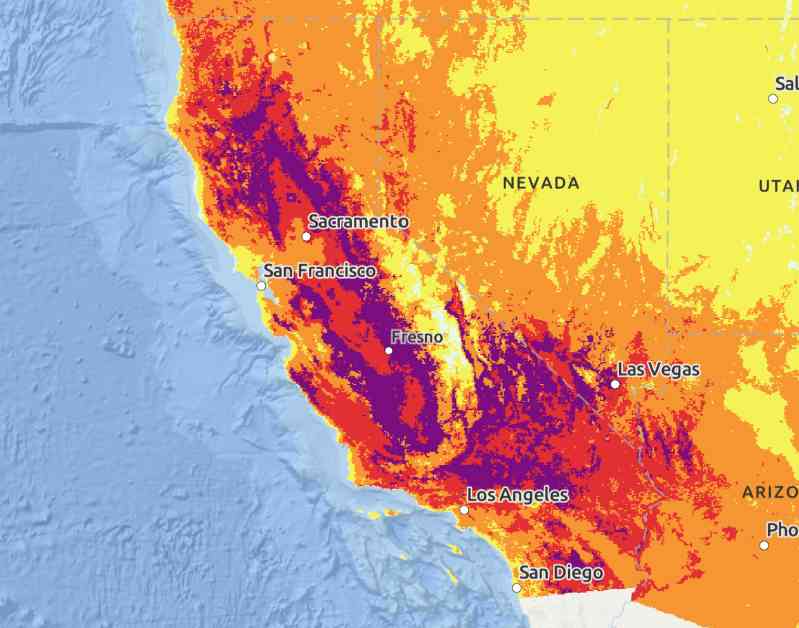California is currently in the grip of a historic heatwave, with record-breaking temperatures being observed in various locations. This extreme heat is posing a significant health risk to tens of millions of people in the state. The National Weather Service has issued warnings about the potential dangers of this heatwave, which is expected to last for several days.
Temperatures in California have soared to unprecedented levels, with Palm Springs reaching a scorching 124 degrees Fahrenheit and Death Valley National Park recording a high of 128 degrees Fahrenheit. These extreme temperatures are a clear indicator of the impact of climate change on the region.
The link between climate change and extreme weather events like heatwaves is becoming increasingly evident. California has experienced a three-degree increase in temperature over the last century, leading to more frequent and intense heatwaves, wildfires, and other weather-related disasters. The state’s Planning and Governor’s Office has highlighted the need for sustained investment in climate change research and science to build resilience against these impacts.
In the face of recurring heatwaves and other climate change-related challenges, it is crucial to take immediate action to mitigate the effects. Staying indoors, staying hydrated, and avoiding extreme heat are important steps in coping with the current situation. However, long-term solutions such as retrofitting buildings with better insulation, planting trees to reduce temperatures, and implementing stronger climate policies are essential to address the root causes of climate change.
While these measures can help alleviate the impacts of climate change, the ultimate solution lies in reducing greenhouse gas emissions and transitioning to renewable energy sources. The urgency to act on climate change has never been greater, as the extreme heatwave in California serves as a stark reminder of the need for concerted global efforts to combat this pressing issue.






